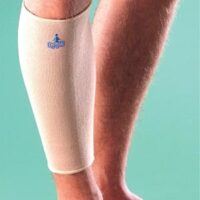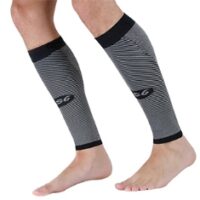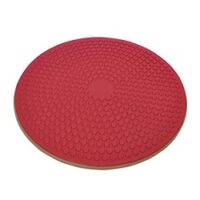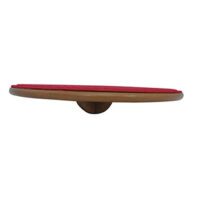Shin Splints

Article by John Miller

Shin Splints
Insights into Shin Pain
Shin splints, a frequent issue among athletes and active individuals, cause pain in the lower legs, predominantly during high-impact activities like running and jumping.
This article discusses shin pain from a physiotherapist’s viewpoint, discussing their types, causes, diagnosis, and treatment strategies. Early intervention by a physiotherapist can avert further complications and facilitate a quick return to activities.
Exploring the Types of Shin Splints
There are two primary categories of shin splints:
Anterior Shin Splints
This type affects the front part of the shinbone, involving the tibialis anterior muscle responsible for foot movements. Pain manifests when lifting the toes while the heels are grounded, indicating inflammation.
Also known as anterior tibial stress syndrome, proper management is essential to avoid aggravation. Read more: Anterior Shin Splints
Posterior Shin Splints
Posterior shin splints impact the inner rear of the shinbone, stressing the tibialis posterior muscle, which supports the inner arch of the foot. In some instance this can predispose you to tibialis posterior tendinopathy.
Symptoms include pain along the inside back of the shin.
It’s crucial to differentiate this from medial tibial stress syndrome (MTSS) and tibial stress fractures as management significantly differs.
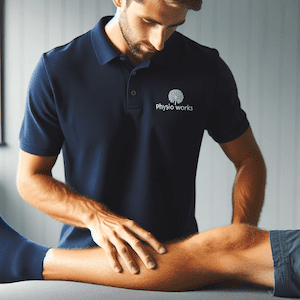
Causes and Contributing Factors
Shin splints arise from a variety of causes, including:
- Sudden increase in physical activities without sufficient rest
- Running on hard or uneven surfaces
- Biomechanical issues like overpronation or limited ankle movement
- Poor muscle control in the legs and hips
- Tight calf muscles
- Inappropriate footwear
Identifying the exact cause is key to effective treatment and prevention.
Identifying the Affected Areas
Shin pain typically originates from the overuse of muscles, the tenoperiosteum (where tendon meets bone), and the shinbone itself. The lower third of the tibia is often where bone injuries, ranging from mild stress reactions to severe stress fractures, occur.
Detailed diagnosis might require MRI, as X-rays might not detect these injuries.
Symptoms and Diagnosis
Symptoms include a dull ache in the lower leg, with pain varying in intensity. If pain worsens during physical activities, immediate professional advice is advisable.
Diagnosis generally involves a physical examination and medical history review, with imaging tests conducted to rule out other conditions like stress fractures.
Treatment and Rehabilitation
Treatment involves a multi-stage rehabilitation program, beginning with injury protection and pain and inflammation reduction. This is followed by motion restoration, foot assessment, and muscle strengthening, aiming for a safe return to sports or training.
Following a physiotherapist’s plan is crucial for effective recovery. (Alfayez et al 2017)
Returning to running is a challenge if you wish to avoid a recurrence of your shin pain, so assessing your foot biomechanics and control should be undertaken. Foot posture exercises are often beneficial to control the foot arch and reduce torsional stresses further up the shin.
Expected Outcomes
Recovery depends on the severity of the injury, commitment to the treatment plan, and individual activity demands. Untreated shin pain can lead to more serious conditions like tibial stress syndrome or stress fractures.
A diligent approach to treatment ensures the best recovery outcomes.

Conclusion and Preventative Measures
Shin splints, while common, should not be underestimated. Awareness of their causes, symptoms, and treatments is essential for both prevention and effective recovery.
Seeking professional guidance at the first sign of discomfort is key. Maintaining the health of your legs is vital for an active and healthy lifestyle.
Seeking Professional Help
If you’re experiencing shin pain, don’t hesitate to consult a physiotherapist. They will pinpoint the cause, create a tailored treatment plan, and guide you through recovery. Stay active, but always prioritise your safety.
Related Articles
- Anterior Shin Splints: Key Symptoms, Managing, Tips & Care – This article provides in-depth information on anterior shin splints, a specific type of shin splints.
- Understanding Shin Pain: Causes, Symptoms, And Treatments – Offers a broad overview of shin pain, covering various causes and treatment options, making it a valuable resource for readers.
- Posterior Shin Splints – Understand & Successfully Manage – Focuses on posterior shin splints.
- Overuse Injuries – Since shin splints are often caused by overuse, this article may provide readers with broader context and preventative tips.
- Calf Pain – As calf pain can be related to shin splints, this article could offer additional insights into related pain and management strategies.
- Compartment Syndrome – Addresses a condition that might be relevant for readers interested in lower leg pain and injuries.
- Tibialis Posterior Tendinopathy – Provides information on a condition related to posterior shin splints.
Rochedale - Call 38410277
Book Online: RochedaleSalisbury - Call 32751044
Book Online: SalisburySandgate - Call 32691122
Book Online: SandgateShin Pain Causes
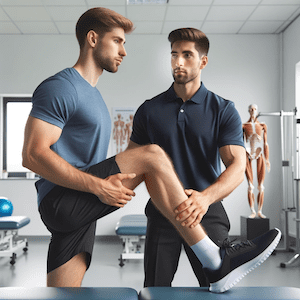

Shin Pain and Injury
Common Sources and Conditions
Understanding the common shin pain causes is crucial for effective management and prevention. This section discusses the various factors that contribute to shin pain.
General Overview of Shin Pain
Exploring the basics and general aspects of shin pain
Specific Conditions Related to Shin Pain
Shin Splints
Bone-Related Issues
Tendon and Muscle Problems
- Tibialis Posterior Tendinopathy
- Calf Muscle Tear
- Muscle Strain
- DOMS - Delayed Onset Muscle Soreness
- Cramps
Achilles Tendon Issues
Other Related Conditions
Shin Pain Due to Overuse and External Factors
Systemic and Neurological Conditions Leading to Shin Pain
Shin Pain Treatment
Effective treatment options vary depending on the cause of shin pain. This part provides guidance on treating different types of shin pain.
- Treating Shin Splints: Guidelines for managing and recovering from shin splints.
- Stress Fracture Care: Tips for healing and rehabilitation.
- Muscle Injury Treatment: Advice on treating strains and overuse injuries.
- Post-Fracture Rehabilitation: Strategies for dealing with shin pain following leg fractures.
Shin Pain FAQs
This section answers frequently asked questions about shin pain, providing valuable information for those experiencing or concerned about shin pain.












